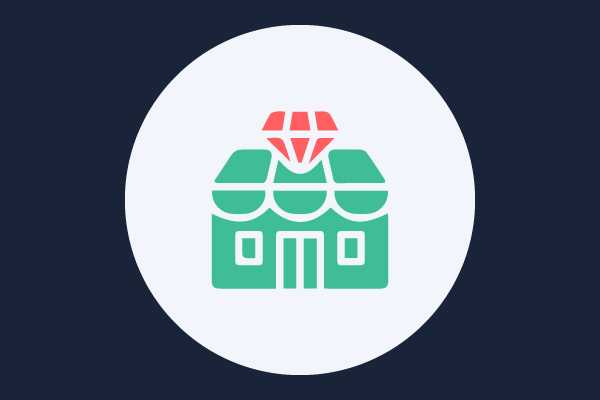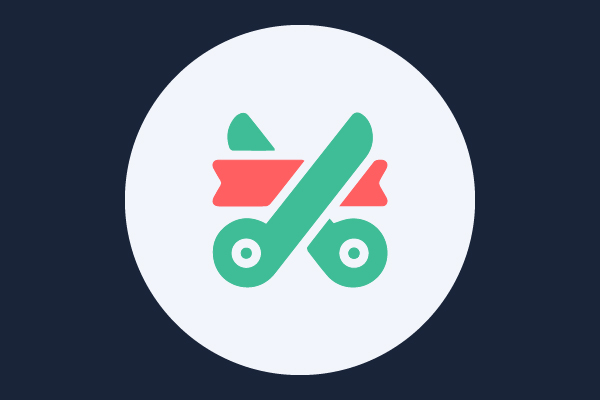What differs Luxury Brand Management from lower-priced markets?
Products and services of luxury brands evoke fascination and covetousness.
Luxury Brand Management is very different from the management of premium brands or basic brands.
This post gives you the key differences in terms of product, price, distribution, and communication.
CHAPTER 1:
Product
Luxury products are only accessible to very few of us.
Customers don’t necessarily need them, but highly desire them.
They buy them for their quality and craftsmanship, and they increase their self-worth and status.
What makes a product luxury?
Luxury brands must offer the highest utility quality possible across all attributes.
That applies to functional, emotional, and symbolic attributes.
Luxury products combine perfection in detail and go way beyond basic needs.
Personalized service is also an integral part of the Brand Experience of luxury brands.
For example, at Burj Al Arab, guests staying in suites have their private butler available 24h a day.
How are luxury goods manufactured?
Handmade manufacturing is an essential component of luxury goods.
It gives a product a personal and individual character and limits production volume naturally.
Manufacturers of luxury goods aim towards maintaining full control over quality and the production process.
When Montblanc entered the market for luxury watches, they built their own handcrafting facility in Villeret (Switzerland).
Luxury brand managers follow the strategy to be in full control of their supply chain.
They try to be highly vertically integrated and avoid outsourcing.
Hermès even has its own cattle farms and stitching departments.
Are luxury brands an investment?
Luxury Brand Management aims towards products retaining their value.
Limited production and limited editions provide the desired exclusivity.
Some luxury products increase in value over time.
For example in 2019 a Birkin bag of fashion brand Hermès sold for £162,500 in a London auction, while the original predicted sales price was £70-90,000 in 2015.
That’s about a 100% ROI in just four years!
What’s the difference between luxury and premium?
Luxury goods do not necessarily differ from premium products in terms of Utility.
The main differentiation criteria are the brand image, quality, and brand design.
Everything that you would consider extras or maybe even unnecessary are standard for luxury brands.
Can small businesses compete in the luxury industry as well?
The intensive focus on handmade and unique products gives small businesses a great chance to compete in the luxury industry.
While they would have little chances of being successful with handmade products in the mass market, they can compete in the luxury market.
Due to extremely high sales prices and margins, they only need to sell a few items a year to grow and make profits.
So luxury management of a luxury business offers an opportunity for small businesses.
What are common problems with luxury products?
Luxury products stand for the extraordinary and can, therefore, have conflicts with ethical aspects.
Expensive sports cars or private jets aren’t that environmentally friendly.
However, sustainability has a high impact on luxury shoppers’ brand choice and willingness to pay.
This results in considerable advantages of integrating sustainability into the luxury brand strategy.
CHAPTER 2:
Price
A flight from LA to Germany costs around $5,000 with Lufthansa Business Class while it costs more than $11,000 with Lufthansa First Class.
A regular room at the Four Seasons in New York costs around $1,500 a night while the Ty Warner Penthouse Suite is priced at $50,000 a night.
In terms of pricing, luxury goods have no limits.
How to price luxury goods?
Most of the time prices of luxury goods are a multiple of already-expensive premium prices.
Luxury goods pricing could not be easier: set the price as high as possible. Done.
Hold on, wait a minute. It’s not so easy!
Price management for luxury goods requires a profound knowledge of customers and the market.
You need to balance volume and price.
Luxury Brand Management needs to know their price-response functions to maximize profits.
How does the purchasing behavior of luxury customers differ?
The luxury market can be paradox:
- The more desirable a brand is, the more they sell.
- Also, the more they sell, the less desirable they are.
In other words: due to the so-called Snob Effect and Veblen Effect price increases lead to higher, not lower volumes.
Higher margins and higher volumes increase the profits of luxury suppliers.
How is the pricing of luxury goods different from other markets?
In regular markets, supply usually exceeds demand.
Suppliers set the price, and the market decides how much volume it is willing to buy.
In luxury markets, suppliers set both the price, and the volume.
They limit production and communicate that limitation to the market upfront, which makes it binding.
They cannot violate this self-imposed limit (in case of unexpectedly high demand), as it would destroy consumers’ trust.
Established luxury goods manufacturers usually sell out limited volumes.
In case they set the price too low, every dollar too low is lost profit.
This approach is fundamentally different from the approach taken in other markets.
What extras do luxury manufacturers sell?
Usually, the prices of luxury goods are all-inclusive.
All extras like an extraordinary service or bonuses like guarantees and memberships are within the sales price.
So in general, luxury goods makers do not sell any extras, as the product already has more features and services than you might be able to imagine.
Are there any discounts for luxury goods?
In general, manufacturers should sell luxury goods at their regular price only.
Price stability, continuity, and consistency are essential components of luxury goods.
Therefore you should not offer discounts because of two reasons:
- Discounts would frustrate customers who have paid full price.
- Discounts would damage the Brand Image.
Consumers see luxury goods as everlasting and stable in price volatility.
Some customers even view luxury goods as investments.
This doesn’t comply with discounts, so the luxury industry doesn’t offer them.
Can anyone buy luxury goods?
Sure, if you have enough money in your bank account to afford them.
However, for extraordinary luxury goods (the ones even millionaires can’t afford), there are long waiting lists and delivery times, which enhance the impression of both shortage and enduring value.
If you would want to buy a one-off Ferrari, the waitlist is five years long.
To be eligible to request a spot on the waitlist, you have to be in the company’s pool of top 250 customers.
The special projects division of Ferrari doesn’t produce more than two or three cars each year without impacting regular production.
Ferrari does this intentionally to ensure the cars are exceptional and exclusive.
Some luxury goods manufacturers carefully select their customers to prevent the wrong customers from harming the Brand Image.
What’s the biggest concern of luxury manufacturers in terms of pricing?
The biggest concern is to maintain consistent price levels.
It’s important not to overestimate demand and thus to produce too many units.
Models with low demand might end up in secondary channels, where they could jeopardize the consistent price levels.
Manufacturers work hard to balance supply and demand.
Poor estimates of volume and price increase the risk of price erosion.
CHAPTER 3:
Distribution
Luxury Brand Management tries to make luxury goods available only at selected locations.
That’s way marketing luxury brands is very different from other sectors, where high availability is vital for the success of a business.
See why that is and if E-Commerce is going to change that.
Where are luxury goods available?
A key aspect of the strategy to distribute luxury goods is selectivity.
Luxury goods are often only available at a small number of carefully chosen stores per country.
This does not only apply to the number of stores: interior store design and appearance and behavior of sales staff must always be consistent with the brand.
To maintain these standards, Brand Management must permanently monitor quality.
How are luxury goods distributed differently than premium goods?
Price stability is a crucial success factor for luxury brands.
To keep full control over price and quality standards, luxury brands typically do not sell their products to retailers.
Instead cooperation with retail, they rely more and more on their own stores.
Switching to self-owned stores is an essential difference for premium brands trying to become luxury brands.
Exclusivity in the sales channel also reflects the exclusivity of the product.
Do consumers buy luxury goods online?
E-Commerce is characterized by availability everywhere and all the time.
This is quite the opposite of luxury goods availability, which is extremely selective.
That’s why the luxury industry avoided selling online for a long time.
Because personalized service and the shopping experience in an exclusive store seemed too important, they only resented their products on their websites (with no option for consumers to buy products).
In the past couple of years, this has changed dramatically.
From 2014 to 2018, the share of E-Commerce as a sales channel in luxury goods grew from 5% to 10%, making it a 26 billion USD industry.
By 2025 Bain & Company expects the share of E-Commerce to increase to around 25% of all luxury goods sold.
It shows that luxury goods buyers do make purchases online, and they will do so even more in the future.
CHAPTER 4:
Communication
80% of all luxury sales are somehow influenced by what consumers saw online.
However, there are two issues far more critical than where luxury brands communicate.
It’s what they communicate, and especially what they don’t.
What aspects do luxury brands communicate?
Luxury goods are attractive to many people because only a few have access to them (mainly because of their price point).
On the one hand, manufacturers know how to make use of high public interest in luxury goods by arranging spectacular actions or events.
On the other hand, tradition is an essential element of luxury brand communication.
Luxury brands usually have a vibrant and sophisticated history.
To maintain their Brand Image and to convey their value to potential customers, luxury goods require:
- outstanding marketing
- selective media usage and
- collaboration with the best designers and photographers.
On average, brands in the luxury sector allocate up to a quarter of overall revenue to communication budgets.
What aspects should luxury brands not communicate?
The luxury industry rarely communicates prices.
Prices don’t appear in brochures, on websites, or in stores.
They are only available on request.
One might think that if a customer asks for the price, he cannot afford the product.
If Luxury Consumers want to have a luxury product, they don’t care about the price so much.
Therefore, the price is not really a point of interest. It’s all about value.
In the world of luxury goods customers, anyone who needs to ask for the price is not a real luxury goods customer.




